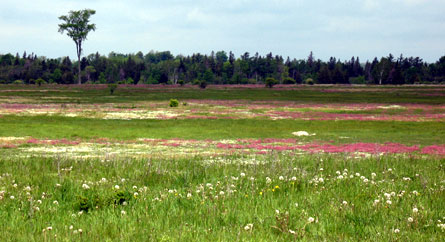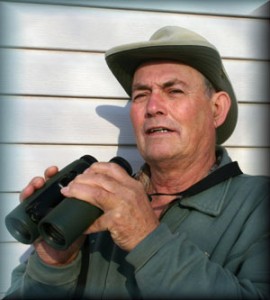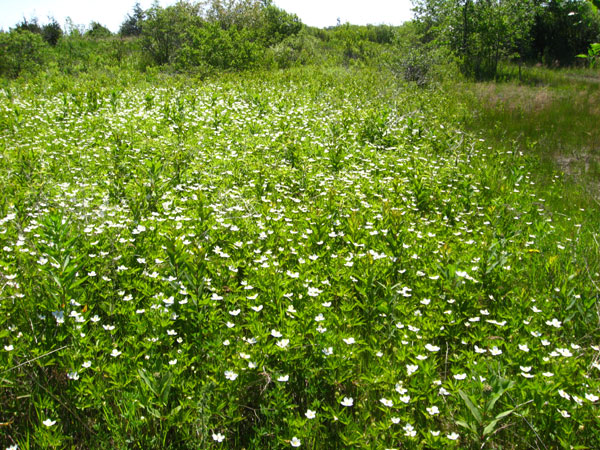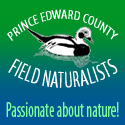Alvars rock – rich and rare habitats in our backyard
Prince Edward County Field Naturalists | Feb 12, 2012 | Comments 0
 Alvars are open ecosystems on thin soil – or no soil at all – over a limestone base. These fascinating habitats are extremely rare globally. North America’s alvars, at least, what’s left of them, are mostly in Ontario. More than 90% of Great Lakes region alvars have been destroyed or degraded: 250 – 300 of these habitats remain, or just 0.5% of our land area. The Ministry of Natural Resources says all alvar habitats in our region are provincially rare.
Alvars are open ecosystems on thin soil – or no soil at all – over a limestone base. These fascinating habitats are extremely rare globally. North America’s alvars, at least, what’s left of them, are mostly in Ontario. More than 90% of Great Lakes region alvars have been destroyed or degraded: 250 – 300 of these habitats remain, or just 0.5% of our land area. The Ministry of Natural Resources says all alvar habitats in our region are provincially rare.
Two thirds of Great Lakes alvars are close to the shore. Protection for nearshore alvars varies considerably around the Great Lakes. Michigan has fully protected 66% of its shore-based alvars while Ontario has protected only 7%. In Ontario, 12,000 acres (4856 hectares) of shoreline alvars are considered to be at risk.
A Noah’s Ark of rare species
Alvars are important because they support species which can’t exist anywhere else. Scientists have found that alvars act as a kind of evolutionary hothouse for some species. In fact, they’re some of the most species-rich habitats in the world. Grassland birds such as bobolinks, eastern meadowlarks and loggerhead shrikes (all species at risk) live on alvars. So do rare plants, like the northern bog violet, Kalm’s lobelia and the dwarf lake iris. Up to 1,000 species of insects exist only on alvars. Rare butterflies and snails, mosses and lichens also call alvars home. Red cedars – which we know well in the County – are typical of woodland alvars.
Alvars are challenging places to live because they’re wet – often flooded – in spring and bone-dry in summer. Shallow soil restricts the growth of root systems. Species that live here are survivors.
A treasure trove of prairie plants
One of the big surprises of Ontario alvars is the number of prairie plants they contain, provincially rare plants such as the prairie smoke, which has been killed off in New York state and is in trouble in Michigan. Recently, botanists from Queen’s University analyzed the genes of Ontario alvar plants and found many are closely related to prairie plant communities. The scientists believe that’s because alvars were formed at the same time as the prairies, about 4,00 to 8,000 years ago. Today, Ontario alvars are islands in what’s left of the eastern forests.
Gilead’s plans for our alvars
At Ostrander Point, Gilead Power intends to grind up alvar rock and turn it into cement for industrial wind turbine foundations. The Stantec environmental assessment report says, “In addition to the direct removal and fragmentation of alvar habitat, areas adjacent to constructed roads and turbine pads have increased potential for the introduction or spread of exotic species.” There is also a possibility of toxic spills around the alvars.
The environmental assessment goes on to say that there should be “compensation” for the destroyed alvars. Stantec recommends that this be done by turning a meadow next to the parking lot into an alvar. The report does not explain how 4,000 – 8,000 years of complex evolution can be recreated simply by reseeding this area with alvar plants. A Swedish study found that some alvars which had been transformed into farm fields were unable to return to alvar habitat even 50 years after farming was abandoned.
* * *
 The Toxic and the Invasive In Our Midst: Terry Sprague, 7pm Tues. Feb 28 Bloomfield Town Hall on Invasive & Toxic Plants. Do you know how to recognize poison ivy – giant hogweed – baneberry? Do you know why common buckthorn, purple loosestrife, and dog strangling vine are considered “invasive”? What about the knotweed, goutweed and periwinkle in your garden? Learn about these invasive and sometimes toxic plants that we have around us here in Prince Edward County.
The Toxic and the Invasive In Our Midst: Terry Sprague, 7pm Tues. Feb 28 Bloomfield Town Hall on Invasive & Toxic Plants. Do you know how to recognize poison ivy – giant hogweed – baneberry? Do you know why common buckthorn, purple loosestrife, and dog strangling vine are considered “invasive”? What about the knotweed, goutweed and periwinkle in your garden? Learn about these invasive and sometimes toxic plants that we have around us here in Prince Edward County.
The Prince Edward County Field Naturalists, founded in 1997, is an affiliate of Ontario Nature. It provides an educational forum dedicated to the study, promotion, appreciation and conservation of the flora and fauna within Prince Edward County. The public is welcome at the meetings held on the last Tuesday of the month from September to May, except December, at Bloomfield Town Hall. Guest speakers introduce a variety of nature related topics. All members are encouraged to participate at meetings by sharing their experiences and observations. Regularly scheduled field trips in the vicinity offer members the opportunity to experience various habitats. Membership in PECFN is open to all. Contact: Prince Edward County Field Naturalists, P.O. Box 477, Bloomfield, Ontario K0K 1G0 Or Cheryl Anderson 613-471-1096
Filed Under: Uncategorized
About the Author: The Prince Edward County Field Naturalists, founded in 1997, is an affiliate of Ontario Nature. It provides an educational forum dedicated to the study, promotion, appreciation and conservation of the flora and fauna within Prince Edward County. The public is welcome at the meetings held on the last Tuesday of the month from September to May, except December, at Bloomfield Town Hall. Guest speakers introduce a variety of nature related topics. All members are encouraged to participate at meetings by sharing their experiences and observations. Regularly scheduled field trips in the vicinity offer members the opportunity to experience various habitats. Membership in PECFN is open to all. Contact: Prince Edward County Field Naturalists, P.O. Box 477, Bloomfield, Ontario K0K 1G0 Or Cheryl Anderson 613-471-1096


































